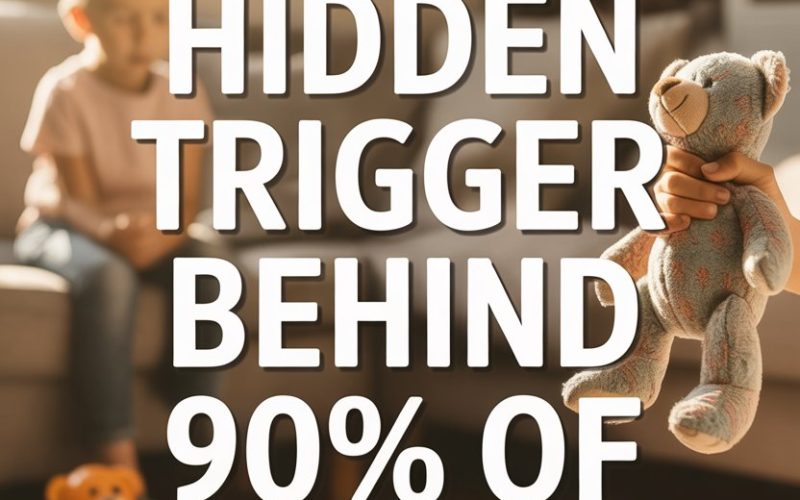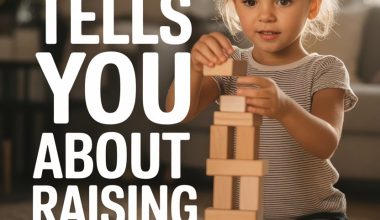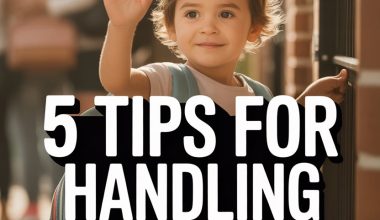Picture this: You’re peeling potatoes, one eye on the oven timer, and suddenly your six-year-old erupts like a volcano because their blue crayon is “too blue.” You’d think you’d just told them Peppa Pig is cancelled.
Any parent will agree—outbursts are as inevitable as a toddler with sticky hands. Yet, knowing what actually sets these meltdowns off? That’s the real magic trick.
It’s tempting to chalk it up to “kids will be kids.” But there’s a not-so-hidden trigger behind the vast majority of dramatic explosions.
Spoiler alert: It’s not just “because they’re tired.” (Though, let’s admit, a tired child can unravel the fabric of the universe.)
The Unseen Saboteur: Unmet Needs
Children—like adults—have physical, emotional, and developmental needs.
Unlike adults, they typically lack the language, self-awareness, or impulse control to flag these needs politely. (Wouldn’t that be nice?) Instead, unmet needs bubble up and explode with all the subtlety of a fire alarm.
While “hungry” and “tired” are the classics, outbursts are often about a more elusive need: connection.
Dr. Gordon Neufeld, a renowned developmental psychologist, argues that most challenging behaviours in children stem from unmet attachment needs.
When kids don’t feel connected—whether to a parent, teacher, or caregiver—their nervous systems go on high alert. Suddenly, the tiniest irritation feels catastrophic.
That blue crayon? Not the real issue. “No one understands me” is the underlying tune.
Why Connection Trumps Correction
Picture a child’s emotional cup. If it’s running low on connection, it’s only a matter of time before it spills over—usually at the most inconvenient moment.
Dr. Laura Markham explains that connection is a biological imperative for children; it literally calms their nervous system and supports emotional regulation.
A study in the Journal of Family Psychology found that children who experience more positive, frequent parent-child interactions have fewer behavioural outbursts and recover from them more quickly.
Connection acts like preventative medicine for meltdowns—and the best part is, it doesn’t involve an extra trip to the shops.
But My Kid Gets Loads of Attention!
Here’s the kicker: attention and connection aren’t the same thing. Scolding, negotiating, or hovering over assignments counts as attention—it doesn’t fill their emotional tank the way genuine connection does.
Connection is about presence: eye contact, a gentle touch, shared laughter, or five minutes of undistracted time signals “I see you, I value you.” The rest? That’s just noise.
Ever noticed how your child falls apart after a long day—even if you’ve been in the same house together? It’s quality over quantity.
Three minutes of true connection can sometimes do more than an hour of distracted togetherness.
How Modern Life Sabotages Connection
Parenting in a world pinging with notifications, endless to-do lists, and the siren call of streaming services makes connection harder than ever. Parents get told to “be present,” which sounds lovely—until the dinner’s burning and someone’s lost a sock.
Research from the University of Michigan on “technoference” found that parents’ phone use was linked to more child behaviour problems.
Not because phones are evil, but because small, repeated interruptions erode the feeling of being truly “with” someone.
Spotting the Signs: When the Connection Cup Is Low
- More whining than usual
- Picking fights with siblings (or, you know, the dog)
- Defiance over routines they usually sail through
- Frequent “look at me!” behaviour—even if it’s negative
It’s a bit like your petrol gauge fluctuating wildly—only the warning light is a tantrum over the wrong spoon.
Quick Connection Fixes for the Chaos of Family Life
It’s reassuring to know that “connection time” doesn’t require elaborate crafts, hours of role-play, or the patience of a saint. Little things matter most:
- Look your child in the eye and offer a genuine smile
- Share a private joke or silly handshake—something just for the two of you
- Read one page of a favourite book with full attention (bonus points for silly voices)
- Offer a quick cuddle, back rub, or tousle of the hair
- Pause what you’re doing—even for 30 seconds—if your child is clearly reaching out
It’s not about perfection; it’s about those small, micro-moments that say, “I’m here.”
What to Do in the Middle of an Outburst
Still, no parent can prevent every meltdown. When the fireworks start, connection can still help—just in a slightly different way:
- Take a deep breath (yes, you)
- Get down to their level physically—knees, not power stance
- Offer empathy, not logic: “You’re having such a hard time. I’m right here.”
- Let the storm pass before launching into discussion or consequences
Even if your child is howling about the injustice of broccoli, your calm presence is the anchor they need. (And you’re far less likely to say something regrettable.)
Why Traditional Discipline Often Backfires
Traditional approaches—timeouts, threats, or bribes—sometimes stop the behaviour in the moment but rarely address the root cause. The child learns to bottle up feelings rather than trust you with them.
Psychologist Dr. Dan Siegel, author of The Whole-Brain Child, points out that connection before correction is more effective for long-term emotional regulation.
Children are more likely to cooperate, apologise, and reflect when they feel understood.
Can You Connect Too Much?
No need to worry you’ll spoil your child by being present. Secure attachment doesn’t mean saying “yes” to everything or rescuing them from frustration. It’s about being their safe base, not their personal butler.
Boundaries set with warmth are far more effective—and lead to fewer outbursts—than boundaries set with cold detachment. Imagine a soccer pitch: the lines are clear, but there’s still plenty of room to play.
When Big Feelings Don’t Budge
Every so often, a child’s outbursts continue even when you’re doing everything “right.” Chronic sleep deprivation, sensory issues, anxiety, or learning differences can all be at play.
If you suspect more is going on, connecting with a paediatrician, occupational therapist, or family psychologist can lift that weight off your shoulders.
No parent can fill every need, every day. There’s no trophy for martyrdom. But you can be their anchor, even in the storm.
The Takeaway You Can Try Tonight
Next time you sense the volcano rumbling, resist the urge to fix, scold, or distract. Offer connection, even when it feels awkward or cheesy.
It might look like rubbing little shoulders, sharing a secret handshake, or simply saying, “It’s tough, isn’t it? I’m right here.”
Turns out, the “hidden trigger” behind most outbursts isn’t sugar, screen time, or the phases of the moon.
It’s a cry for connection—something every parent can provide, even in the thick of family chaos.
Keep your kettle on, your eye on the blue crayon, and remember: you’re more important than any superhero—at least to your own tiny humans.





